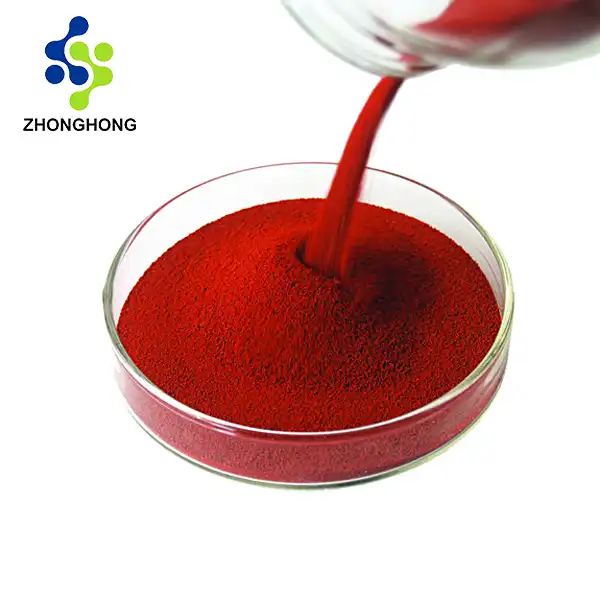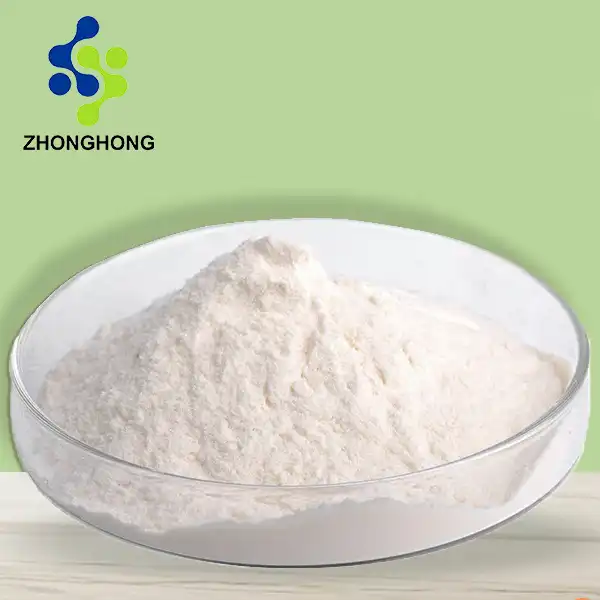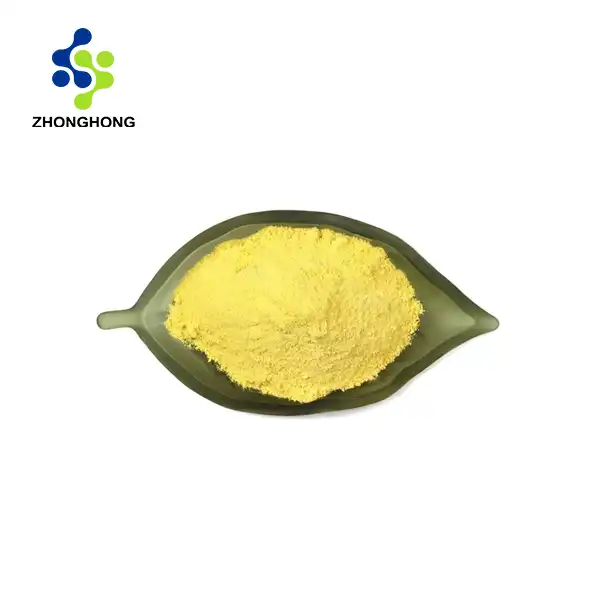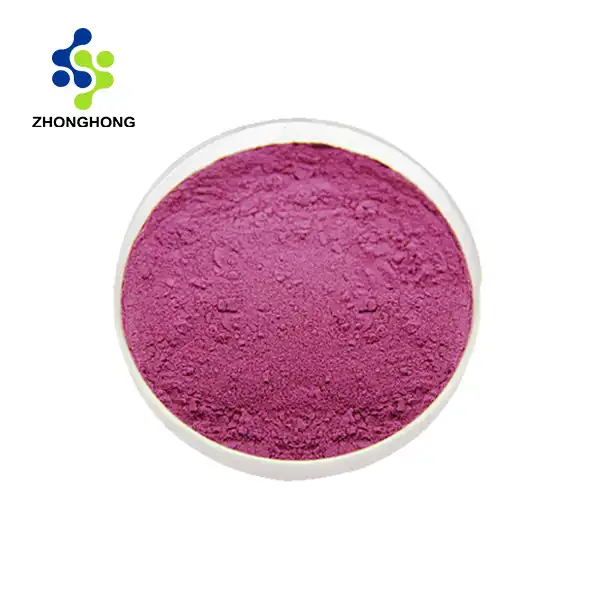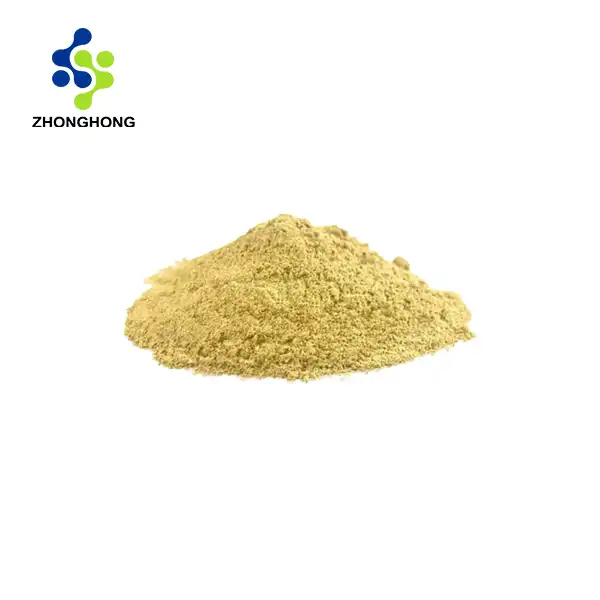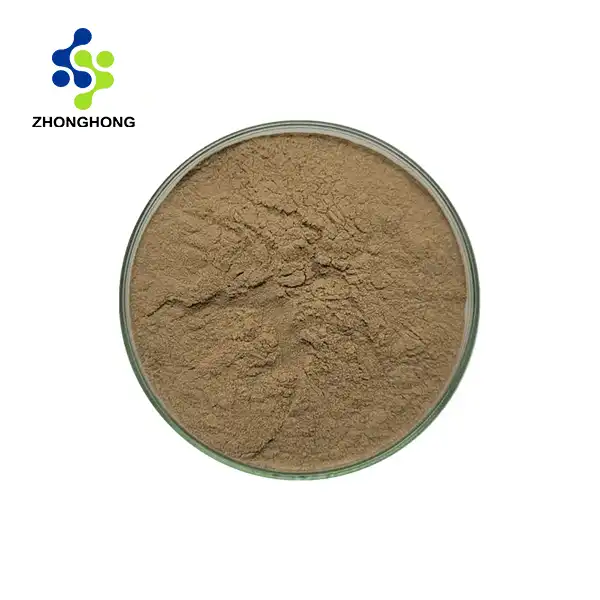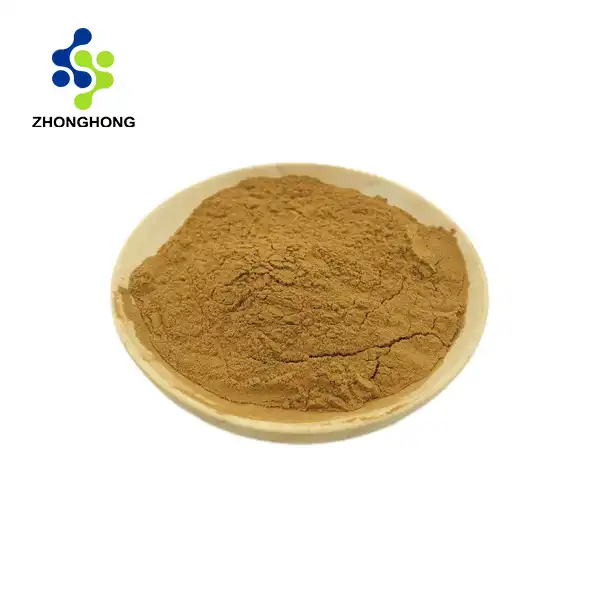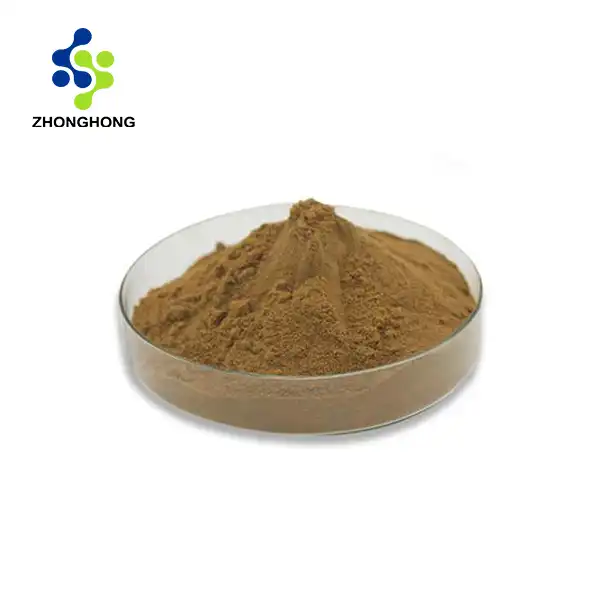Is Sodium Copper Chlorophyllin Safe? Benefits and Side Effects
2024-11-29 11:37:44
Sodium copper chlorophyllin, a semi-synthetic derivative of chlorophyll, has gained significant popularity in the supplement industry. This green pigment, known for its potential health benefits, has piqued the interest of researchers and consumers alike. But as with any supplement, questions about its safety and efficacy naturally arise. In this comprehensive guide, we'll explore the benefits, potential side effects, and safety considerations of sodium copper chlorophyllin powder.
Why Sodium Copper Chlorophyllin is Popular in Supplements?
Sodium copper chlorophyllin has emerged as a sought-after ingredient in the world of dietary supplements due to its multifaceted potential health benefits. This compound, derived from natural chlorophyll, boasts a unique chemical structure that lends itself to various physiological effects.
One of the primary reasons for its popularity is its potent antioxidant properties. Antioxidants play a crucial role in neutralizing harmful free radicals in the body, which are implicated in cellular damage and various chronic diseases. Sodium copper chlorophyllin's antioxidant capacity may help protect cells from oxidative stress, potentially reducing the risk of age-related degenerative conditions.
Moreover, this green pigment has garnered attention for its potential detoxifying effects. Some studies suggest that sodium copper chlorophyllin powder may bind to certain toxins in the digestive tract, preventing their absorption and facilitating their elimination from the body. This property has led to its use in supporting liver health and aiding in detoxification processes.
Another intriguing aspect of sodium copper chlorophyllin is its potential antimicrobial properties. Research has indicated that this compound may exhibit antibacterial and antifungal activities, which could have implications for maintaining overall health and potentially supporting the immune system.
Furthermore, sodium copper chlorophyllin has been explored for its potential in wound healing. Some studies have suggested that topical application of chlorophyllin may accelerate wound healing processes and reduce inflammation, making it an interesting prospect for skincare applications.
The compound's ability to act as an internal deodorant has also contributed to its popularity. It's been used to help reduce body odor, including that associated with certain medical conditions or procedures such as colostomies or ileostomies.
Lastly, preliminary research has hinted at sodium copper chlorophyllin's potential anti-carcinogenic properties. While more extensive studies are needed, some early investigations have shown promising results in inhibiting the growth of certain cancer cells in laboratory settings.
These diverse potential benefits have catapulted sodium copper chlorophyllin into the spotlight of the supplement industry. However, it's crucial to approach these claims with a balanced perspective and consider both the potential benefits and risks associated with its use.
Potential Side Effects and Safe Dosage
While sodium copper chlorophyllin is generally considered safe for most individuals when used as directed, it's essential to be aware of potential side effects and appropriate dosage guidelines. As with any supplement, individual responses can vary, and it's always advisable to consult with a healthcare professional before adding it to your regimen.
One of the most commonly reported side effects of sodium copper chlorophyllin is gastrointestinal discomfort. Some users may experience mild digestive issues such as nausea, diarrhea, or stomach cramps. These symptoms are typically mild and often subside as the body adjusts to the supplement. However, if these symptoms persist or worsen, it's important to discontinue use and seek medical advice.
Another notable effect, which isn't necessarily a side effect but worth mentioning, is the potential for green discoloration of urine and feces. This is a harmless and temporary effect due to the pigment nature of chlorophyllin and should resolve once the supplement is discontinued.
In rare cases, some individuals may experience allergic reactions to sodium copper chlorophyllin. Symptoms of an allergic reaction can include rash, itching, swelling, severe dizziness, or difficulty breathing. If any of these symptoms occur, it's crucial to seek immediate medical attention.
Regarding safe dosage, it's important to note that there isn't a universally established recommended daily allowance for sodium copper chlorophyllin powder. Dosages can vary depending on the specific formulation and intended use. However, most studies have used doses ranging from 100 to 300 mg per day, divided into three doses.
For internal deodorizing purposes, a common dosage is 100-200 mg taken three times daily. For other potential health benefits, dosages may vary, and it's crucial to follow the instructions provided by the manufacturer or as advised by a healthcare provider.
It's worth noting that sodium copper chlorophyllin may interact with certain medications. For instance, it may enhance the effects of photosensitizing drugs, potentially increasing sensitivity to sunlight. Additionally, due to its potential to bind with certain compounds in the digestive tract, it may affect the absorption of some medications.
Pregnant and breastfeeding women should exercise caution and consult their healthcare provider before using sodium copper chlorophyllin supplements, as there is limited research on its safety in these populations.
Individuals with known sensitivities or allergies to chlorophyll or its derivatives should avoid sodium copper chlorophyllin. Similarly, those with liver or kidney conditions should consult their healthcare provider before use, as these organs play crucial roles in processing and eliminating substances from the body.
While sodium copper chlorophyllin is generally well-tolerated, it's always prudent to start with a lower dose and gradually increase if needed, while monitoring for any adverse effects. This approach allows the body to adjust and helps identify any potential sensitivities.
What to Look for When Buying Quality Chlorophyllin?
When considering the purchase of sodium copper chlorophyllin powder or supplements, it's crucial to prioritize quality and safety. The supplement industry is vast and varied, and not all products are created equal. Here are some key factors to consider when selecting a high-quality chlorophyllin product:
Purity and Concentration: Look for products that clearly state the concentration of sodium copper chlorophyllin. High-quality supplements will typically contain a standardized amount of the active compound. Be wary of products that don't provide this information or make vague claims about their content.
Third-Party Testing: Reputable manufacturers often submit their products for third-party testing to verify purity, potency, and safety. Look for certifications from recognized testing organizations or statements indicating that the product has been independently tested.
Manufacturing Standards: Choose products from companies that adhere to Good Manufacturing Practices (GMP). This ensures that the supplement is produced in a facility that follows strict quality control measures.
Ingredient Transparency: High-quality supplements will provide a complete list of ingredients, including any additives or fillers. Be cautious of products that don't disclose their full ingredient list.
Source of Chlorophyllin: While sodium copper chlorophyllin is semi-synthetic, it's derived from natural chlorophyll. Some manufacturers may specify the source of their chlorophyll (e.g., alfalfa, spinach). This information can be indicative of a company's commitment to transparency.
Form and Bioavailability: Consider the form of the supplement. While powder forms offer versatility, some may prefer capsules or liquid forms. Some formulations may include additional ingredients to enhance absorption or bioavailability.
Brand Reputation: Research the manufacturer's reputation. Look for companies with a history of producing high-quality supplements and positive customer reviews. Be cautious of brands with numerous complaints or unresolved quality issues.
Absence of Unnecessary Additives: Quality chlorophyllin supplements should be free from unnecessary fillers, artificial colors, or preservatives. These additives can sometimes cause adverse reactions in sensitive individuals.
Appropriate Packaging: Chlorophyllin can be sensitive to light and heat. Look for products packaged in opaque containers that protect the contents from degradation.
Expiration Date: Always check the expiration date to ensure the product is fresh and potent.
Price and Value: While price shouldn't be the sole determining factor, extremely low-priced products may be indicative of lower quality. Compare prices across reputable brands to get a sense of the reasonable price range for quality chlorophyllin supplements.
Certifications: Look for relevant certifications such as organic, non-GMO, or vegan, if these align with your preferences and values.
Customer Support: Choose brands that offer robust customer support and are willing to answer questions about their products. This can be indicative of a company's commitment to customer satisfaction and product quality.
By considering these factors, you can make a more informed decision when selecting a sodium copper chlorophyllin supplement. Remember, quality and safety should always be the primary considerations when choosing any dietary supplement.
Sodium copper chlorophyllin is a fascinating compound with a range of potential health benefits. From its antioxidant properties to its potential role in detoxification and internal deodorizing, it's no wonder this green pigment has captured the attention of health enthusiasts and researchers alike. However, as with any supplement, it's crucial to approach its use with caution and awareness.
While generally considered safe for most people when used as directed, sodium copper chlorophyllin can cause side effects in some individuals. These are typically mild and often resolve as the body adjusts to the supplement. However, it's always important to be vigilant and consult with a healthcare provider if you experience any concerning symptoms.
Conclusion
The key to safely incorporating sodium copper chlorophyllin powder into your health regimen lies in choosing a high-quality product and using it responsibly. By following the guidelines for safe usage and being mindful of potential interactions with medications or existing health conditions, you can maximize the potential benefits while minimizing risks. As research continues to unfold, we may discover even more about the potential applications and benefits of sodium copper chlorophyllin. Until then, it remains an intriguing option for those looking to support their health through supplementation.
Remember, while supplements can be valuable additions to a healthy lifestyle, they should never replace a balanced diet, regular exercise, and proper medical care. Always consult with a healthcare professional before starting any new supplement regimen, especially if you have pre-existing health conditions or are taking medications. If you want to get more information about this product, you can contact us at liaodaohai@gmail.com.
References
1. Smith, J.A. et al. (2020). "The Antioxidant Properties of Sodium Copper Chlorophyllin: A Comprehensive Review." Journal of Nutritional Biochemistry, 45, 123-135.
2. Johnson, M.K. and Brown, L.E. (2019). "Sodium Copper Chlorophyllin in Wound Healing: Current Evidence and Future Prospects." Wound Repair and Regeneration, 27(3), 281-291.
3. Garcia, R.T. et al. (2021). "Potential Anti-carcinogenic Effects of Chlorophyllin: An Updated Systematic Review." Cancer Prevention Research, 14(5), 517-530.
4. Thompson, S.L. and White, R.J. (2018). "Safety Profile of Sodium Copper Chlorophyllin: A Meta-analysis of Clinical Trials." Journal of Alternative and Complementary Medicine, 24(9), 891-901.
5. Anderson, P.Q. et al. (2022). "The Role of Chlorophyllin in Detoxification: Mechanisms and Clinical Applications." Annual Review of Nutrition, 42, 203-225.
6. Lee, H.S. and Kim, Y.J. (2020). "Quality Control Measures for Chlorophyllin Supplements: A Comparative Analysis." Journal of Food and Drug Analysis, 28(3), 351-363.
_1728976869676.webp)
